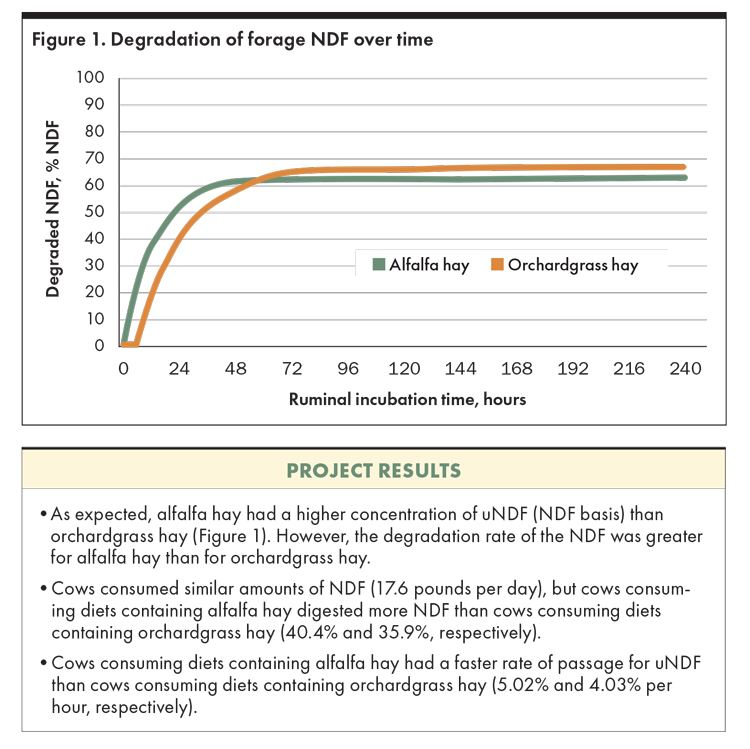Every choice that affects cow nutrition can have far-reaching impacts on both milk production and environmental sustainability. Researchers are constantly looking for ways to improve the efficiency of feed and digestion to optimize cow health and production. One area that has captured the attention of researchers is the digestion of fiber, particularly from forages like alfalfa and grasses, and how this affects dairy cows’ overall metabolism and performance.
Gonzalo Ferreira of Virginia Tech has spent years investigating how different types of fiber impact the digestive system of high-producing dairy cows. His work, funded through NAFA’s Alfalfa Checkoff, aims to not only optimize milk production but also examine how fiber degradation and passage rate from the rumen affect methane emissions, a crucial aspect of sustainability in dairy farming.
The research began with a common observation among dairy farmers: Alfalfa, despite being a staple forage for dairy cows, behaves differently in the rumen than grasses. From a fiber degradation standpoint, alfalfa fiber — when measured by neutral detergent fiber (NDF) — is considered less digestible than fiber found in grasses like orchardgrass.
We know that the NDF from alfalfa is less digestible, but does that really translate into poorer overall fiber quality? How does that impact things like milk production or methane emissions?
These were the questions Ferreira was asking when he initiated the study and drove him to explore how fiber degradation and passage rate affect fiber metabolism and, ultimately, dairy cow productivity.
These were the questions Ferreira was asking when he initiated the study and drove him to explore how fiber degradation and passage rate affect fiber metabolism and, ultimately, dairy cow productivity.
Ferreira conducted his study using two types of hay: alfalfa and orchardgrass. He then formulated two distinct diets for the cows, each containing 30% NDF. Both diets included one-third each of concentrate, corn silage, and hay.

Digestion rates differed
One of the most important findings of the study was that fiber from alfalfa hay passed more quickly through the rumen than fiber from orchardgrass hay. Additionally, NDF from alfalfa degraded faster than that from orchardgrass, pointing to a more efficient fiber degradation process for cows consuming alfalfa-based diets.
For farmers, the implication is clear: Fiber from alfalfa may be more easily digested and utilized by dairy cows than fiber from grasses. This could have important consequences for maximizing dry matter intake and, in turn, improving milk production. “We learned that cows fed alfalfa-based diets could potentially digest fiber faster, which could be beneficial for high-producing cows, especially during hot weather when maximizing intake becomes a challenge,” Ferreira explained.
The Virginia Tech dairy nutritionist plans to expand on these findings in future studies. “This is just the beginning,” Ferreira asserted. “We’ve already started another passage rate study, and plan to continue work into 2025 and 2026. We are committed to exploring how forage quality influences fiber metabolism in high-producing dairy cows and linking that to methane emissions, which is a key concern for the sustainability of the dairy industry.”
The ultimate goal is to provide farmers with more precise information on how to optimize cow diets for improved productivity and environmental stewardship.
For dairy farmers, these findings offer a valuable perspective on how alfalfa may be a more efficient forage option for high-producing cows, especially during periods of heat stress when maximizing feed intake is critical. As Ferreira continues to investigate this area, the future looks promising for improving both the productivity and sustainability of dairy farming.
A full copy of the report can be found at: alfalfa.org.
This article appeared in the April/May 2025 issue of Hay & Forage Grower on page 18-19.
Not a subscriber?Click to get the print magazine.

